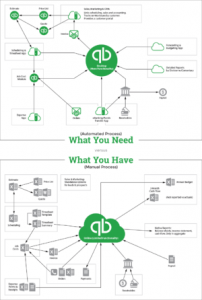You probably know that SRED (pronounced “shred”) is short for Scientific Research and Experimental Development.
There’s more; you may be in for a pleasant surprise.
SRED applies to Process Improvement (and we’re all about that)
SRED isn’t limited to work by people wearing lab coats – it can apply to virtually any technical or technological endeavour.
You may be able to file a SRED claim if:
- you spent money on the innovation of a technical process or its resulting product – making something faster, more efficient, or less expensive;
- there was no guarantee in the first place that the “getting better” bit would work;
- and
- you have evidence to back up (1) and (2).
Trial and Error is ineligible – your work must be systematic. The “scientific” bit comes in because you have to first set up a hypothesis (“we’re going to try this with the expectation of that”) and then see how the “that” worked out in practice.
SRED is limited to technical processes, products, or tools. (Sadly, financial processes are excluded under that definition.) Some provinces have digital media tax credits, so if your financial process improvement involves customised software development, then you should probably talk to a SRED expert.
Questions To Ask Yourself
Have you tried, or are you planning, to:
- Develop a new product?
- Incrementally modify an existing product?
- Increase your product yield?
- Reduce costs by increasing your process efficiency?
- Create a tool to allow you to build something faster, cheaper, or better?
- Modify a purchased piece of equipment to get it to do what it was not originally intended to do?
If any answer is “yes”, you may be able to file for a SRED Claim.
There’s a Fair Whack of Money To Be Had
Canadian-Controlled Private Corporations (“CCPCs”, there’s a clue in the name) with taxable income under $500K will get about 42 cents back for every eligible dollar they spend.
For corporations that are not CCPCs, the number falls to about 30 cents on the eligible dollar.
Unincorporated entities (sole proprietors, partnerships, and trusts) are not eligible.
The credit is refundable, meaning that even if your business makes no profit, you will get the refund back in cash. Eligible costs include direct salaries, direct materials, and specified overheads.
Putting numbers on it:
If you’re a CCPC with profits under that $500K threshold, and you file a SRED return for $30K in eligible costs, you’ll get back a cash payment of $12.6K, irrespective of the contents of the rest of your income tax return.
There is no lower limit for the claim. You can do it yourself, but if your first estimate is a SRED figure of $50K or more, it probably makes sense to outsource the process for a success-based fee. (See our blogs about Business Advisors and Doing It Right The First Time.)
There are a number of lenders who will let you borrow using the filed claim as collateral.
Profit Breakthrough:
When you improve your technical processes, product, or tools, consider applying for SRED. The CRA website has some good information, written for non-accountants, to get you started.
We don’t do SRED consulting ourselves, but we are well connected with those that do. Please feel free to Contact us, either via email or using our website, with your Comments or a referral request.

